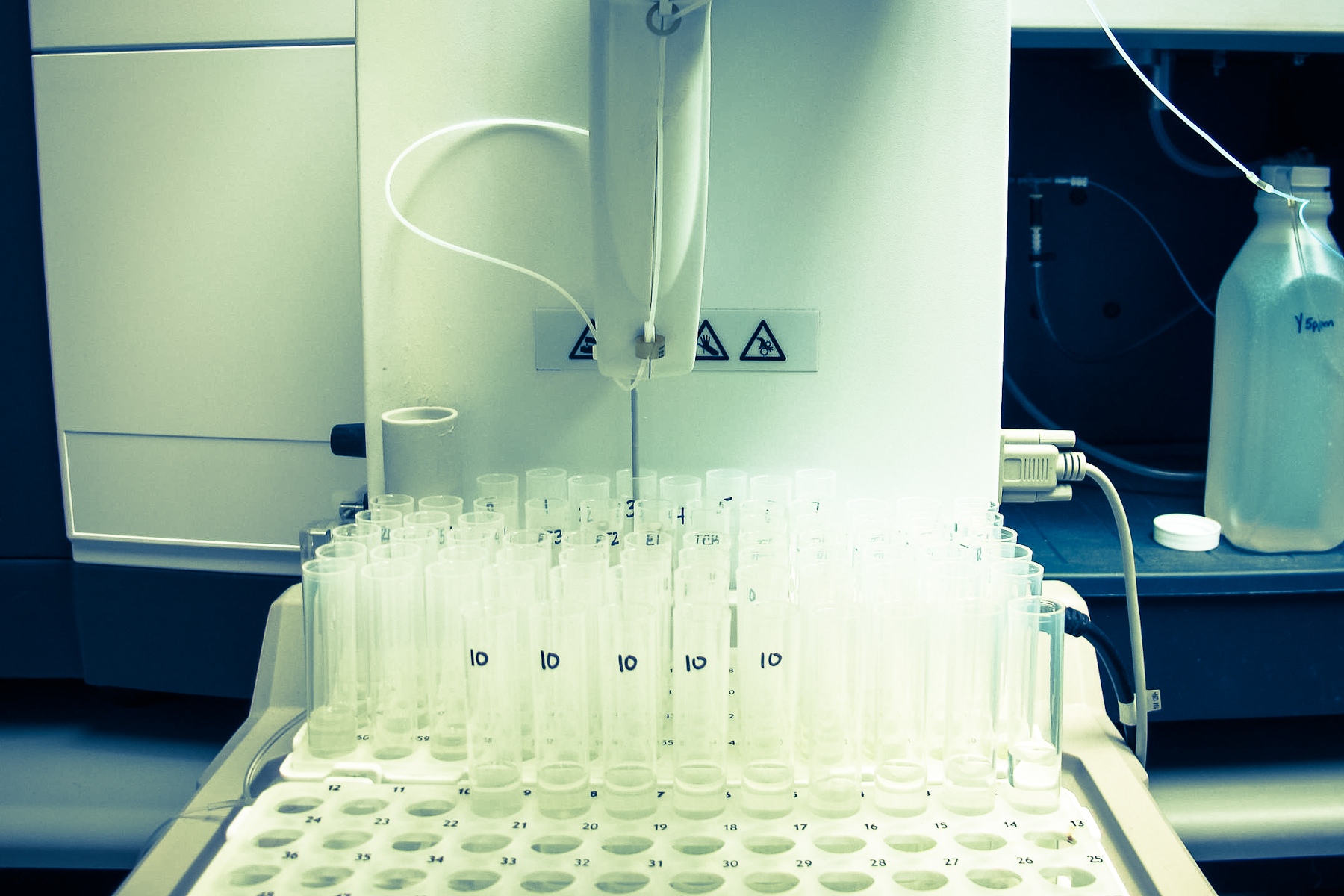About an hour east of Pittsburgh, in Indiana, Pennsylvania, inside a windowless building set far back from the road, the scientists at Environmental Service Laboratories test all kinds of things for safety and compliance with regulations — from drinking water to toys to hazardous waste.
The machine that analyzes tap water samples for lead uses a process called inductively coupled plasma optical emission spectroscopy, according to Laboratory Director Gabriel Taylor.
LISTEN: How Lead Testing Works
To run the test, a lab tech prepares a tray with 60 different 50-milliliter vials. Some contain calibration samples, some contain quality control samples and some contain customer samples. The instrument has a small robot arm with a long metal tube that sucks the water samples out of the vials and up into the body of the machine.
The plasma torch creates an electromagnetic field, which excites the atoms in the sample. Each element will give off a different wavelength of light, and the machine analyzes that light to see if there is lead in the sample — and how much.
ESL’s Chief Technology Officer, Angela Chapman, says they calibrate the machine using samples with known amounts of lead each morning. With each batch, they also feed it quality control samples to make sure it’s still on target.
“We add the amount of lead to that water, so we know what it is,” Chapman says. “We add 10 mg/L to the quality control standard, the instrument processes that standard and then we know we should get back out 10 mg/L of lead — because that’s what we put in it.”
The lab can analyze 60 drinking water samples for lead in 90 minutes, producing results that are accurate within 5 percent.
Ten milligrams per liter is 10 thousand parts per billion. The EPA action level is 15 parts per billion, but the highest lead level found in Flint, Michigan was 13,000 ppb. Chapman says it’s important to calibrate the machine to identify those very rare but very dangerous levels of lead.
It takes just 90 seconds to analyze each sample, and about an hour-and-a-half for a whole tray. ESL aims to have results to customers within two weeks of receiving the sample.
Taylor says only about 60 percent of the test kits they send out to customers make it back to the lab for analysis.
“If anybody has a kit laying around at their house and they haven’t sent it in, it might be a good time to send that in, as a reminder,” he says.
The Pittsburgh Water and Sewer Authority had previously contracted ESL to handle customer lead test requests. PWSA recently awarded new contracts to 120 Water Audit and Environmental Data Services.
###
This story is part of our series Hidden Poison, a public media partnership of The Allegheny Front, 90.5 WESA News, PublicSource and Keystone Crossroads. Learn more at hiddenpoison.org.

